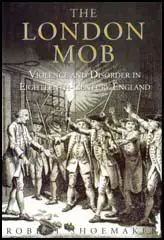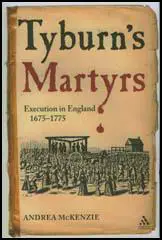Spartacus Review: Volume 5 - Crime & Punishment

Title: The London Mob
Author: Robert Shoemaker
Editor:
Publisher: Hambledon & London
Price: £22.99
Bookshop: Amazon
Spartacus Website: Famous Crimes
Category:
By 1700, London was the largest city in the world, with over 500,000 inhabitants. Very weakly policed, its streets saw regular outbreaks of rioting by a mob easily stirred by economic grievances, politics or religion. If the mob vented its anger more often on property than people, eighteenth-century Londoners frequently came to blows over personal disputes. In a society where men and women were quick to defend their honour, slanging matches easily turned to fisticuffs and slights on honour were avenged in duels. In this world, where the detection and prosecution of crime was the part of the business of the citizen, punishment, whether by the pillory, whipping at a cart's tail or hanging at Tyburn, was public and endorsed by crowds. The "London Mob: Violence and Disorder in Eighteenth-Century England" draws a fascinating portrait of the public life of the modern world's first great city.

Title: Tyburn's Martyrs: 1675-1775
Author: Andrea McKenzie
Editor:
Publisher: Continuum
Price: £29.67
Bookshop: Amazon
Spartacus Website: Tyburn Tree
Category:
The public execution at Tyburn is one of the most evocative and familiar of all eighteenth-century images. Whether it elicits horror or prurient fascination - or both - the Tyburn hanging day has become synonymous with the brutality of a bygone age and a legal system which valued property over human life.But, as this fascinating cultural and social history of the gallows reveals, the early modern execution was far more than just a debased spectator sport. The period between the Restoration and the American Revolution witnessed the rise and fall of a vast body of execution literature - last dying speeches and confessions, criminal trials and biographies - featuring the criminal as an Everyman (or Everywoman) holding up a mirror to the sins of his readers. The popularity of such publications reflected the widespread, and persistent, belief in the gallows as a literal preview of 'God's Tribunal': a sacred space in which solemn oaths, supernatural signs and, above all, courage, could trump the rulings of the secular courts. Here the condemned traitor, "game" highwayman, or model penitent could proclaim not only his or her innocence of a specific crime, but raise larger questions of relative societal guilt and social justice by invoking the disparity between man's justice and God's.
